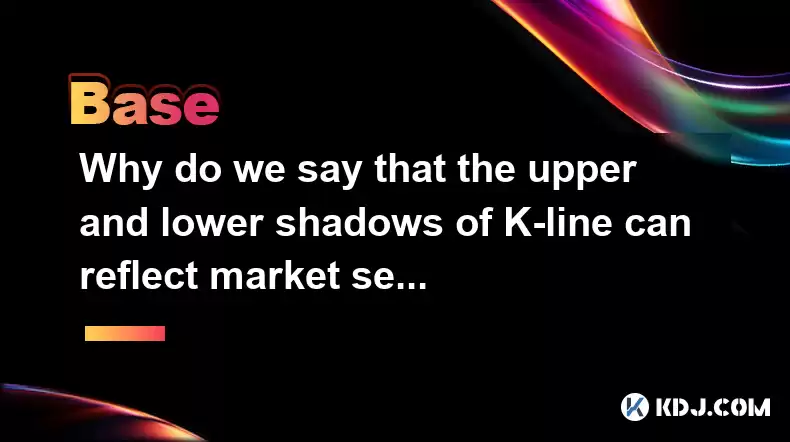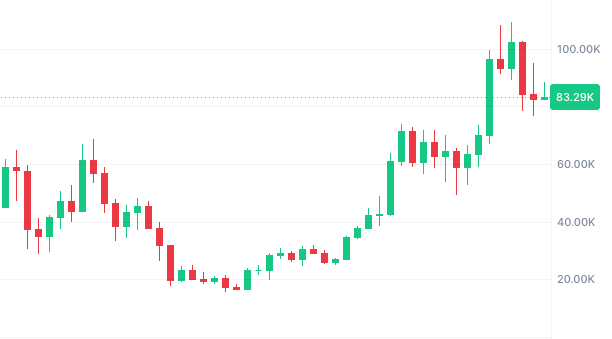-
 Bitcoin
Bitcoin $117300
1.93% -
 Ethereum
Ethereum $3866
5.21% -
 XRP
XRP $3.109
3.81% -
 Tether USDt
Tether USDt $1.000
0.01% -
 BNB
BNB $781.5
1.52% -
 Solana
Solana $173.0
2.95% -
 USDC
USDC $0.9998
0.00% -
 Dogecoin
Dogecoin $0.2181
6.31% -
 TRON
TRON $0.3403
0.93% -
 Cardano
Cardano $0.7683
3.91% -
 Hyperliquid
Hyperliquid $40.08
5.09% -
 Sui
Sui $3.742
7.38% -
 Stellar
Stellar $0.4152
4.69% -
 Chainlink
Chainlink $18.40
10.03% -
 Bitcoin Cash
Bitcoin Cash $580.6
2.21% -
 Hedera
Hedera $0.2543
4.25% -
 Ethena USDe
Ethena USDe $1.001
-0.01% -
 Avalanche
Avalanche $22.94
3.52% -
 Litecoin
Litecoin $121.8
2.24% -
 UNUS SED LEO
UNUS SED LEO $8.955
-0.41% -
 Toncoin
Toncoin $3.330
3.03% -
 Shiba Inu
Shiba Inu $0.00001270
2.97% -
 Uniswap
Uniswap $10.34
6.42% -
 Polkadot
Polkadot $3.805
3.86% -
 Dai
Dai $1.000
0.01% -
 Bitget Token
Bitget Token $4.429
1.80% -
 Cronos
Cronos $0.1495
4.65% -
 Monero
Monero $255.6
-9.08% -
 Pepe
Pepe $0.00001096
4.40% -
 Aave
Aave $282.9
7.85%
Why do the upper and lower shadows of the K-line reflect market sentiment?
The upper and lower shadows of the K-line chart can reflect market sentiment. The long upper shadows indicate that the selling pressure is high, and the market is cautious; the long lower shadows indicate that the buying is strong and the market is optimistic. Combined with entity analysis, trading strategies can be formulated.
Apr 03, 2025 at 02:53 pm

The K-line chart is one of the most commonly used tools in technical analysis, and the upper and lower shadows can intuitively reflect the market's long and short emotions and the psychological state of traders. By carefully observing and analyzing the upper and lower shadows of the K-line, investors can better understand market dynamics and make smarter trading decisions. This article will discuss in detail why the upper and lower shadows of the K-line reflect market sentiment and provide specific analysis methods.
Upper shadow line and market sentiment
The upper shadow line refers to the part between the highest price and the closing price in the K-line chart, which usually represents a large selling pressure in the market. In an upward market, if a long upper shadow appears, it means that the bulls encounter strong selling pressure at the high level, and market sentiment may shift from optimism to cautious or pessimistic. Specifically, the long upper shadow indicates that the price was pushed up for a while during this trading period, but ultimately failed to maintain a high position, and the seller's strength gained the upper hand.
For example, in an upward trend, the long upper shadow that appears may indicate an imminent reversal of the market as sellers begin to take the initiative and market sentiment gradually turns to bearish. On the contrary, if a short upper shadow appears in the downward trend, it means that although the seller tries to suppress the price, the buyer still has strong support at the low level and the market sentiment is relatively optimistic.
Lower shadow line and market sentiment
The lower shadow line refers to the part between the lowest price and the opening price in the K-line chart, which usually represents a strong buying position in the market. In a downward market, if a long lower shadow appears, it means that the bears encounter strong buying at the low level, and market sentiment may shift from pessimism to optimistic or cautious. Specifically, the long lower shadow indicates that during this trading period, the price was once lowered, but ultimately failed to maintain a low level, and the buyer's strength gained the upper hand.
For example, in a downward trend, the long lower shadow that appears may indicate an imminent reversal of the market as buyers begin to take the initiative and market sentiment gradually turns to bullish. On the contrary, if a short lower shadow appears in the upward trend, it means that although the buyer tries to push up the price, the seller still has strong resistance at the high level and the market sentiment is relatively cautious.

Analyze market sentiment based on K-line entities
In addition to the upper and lower shadows, the physical part of the K-line is also crucial to the judgment of market sentiment. An entity refers to the part between the opening price and the closing price. The size and color of the entity can further confirm the strength of market sentiment.
If the K-line entity is large and is a positive line (the closing price is higher than the opening price), it means that the buyer is strong and the market sentiment is optimistic.
If the K-line entity is large and is a negative line (the closing price is lower than the opening price), it means that the seller is strong and the market sentiment is pessimistic.
If the K-line entity is smaller, whether it is a positive or negative line, it means that the market sentiment is relatively neutral and the strength of the buyer and seller is relatively balanced.
Combining the analysis of upper and lower shadows and physical parts, a more comprehensive understanding of market sentiment can be achieved. For example, a positive line with a long upper shadow line and a smaller entity may indicate that the market is facing selling pressure at a high level, but the buyer still has some strength and the market sentiment is relatively cautious.
Practical case: Analyze market sentiment through K-line upper and lower shadow lines
In order to better understand the reflection of the K-line upper and lower shadows on market sentiment, let’s take a look at a specific practical case. Suppose we observe a K-line chart for a trading day, as follows:
Opening price : US$10,000
Maximum price : $10,500
Minimum price : $9,500
Closed price : USD 10,200
In this example, the K-line chart shows a long upper shadow and a long lower shadow, and the solid part is a positive line. The specific analysis is as follows:
Long upper shadow line ($10,500 to $10,200): indicates that there is a strong selling pressure at the high level, and market sentiment has shifted from optimism to cautiousness.
Long lower shadow ($9500 to $10000): indicates that a strong buying at the low level has shifted from pessimism to optimism.
Positive entity ($10,000 to $10,200): It indicates that the buyer has strong strength and the market sentiment is generally optimistic.
Based on comprehensive analysis, this K-line chart shows that the market experienced severe fluctuations during the trading day, but in the end the buyer gained the upper hand and market sentiment shifted from cautious to optimistic.
How to use K-line upper and lower shadows to make trading decisions
In actual trading, investors can use the K-line up and down shadows to formulate trading strategies. Here are some specific operation steps:
Observe the K-line pattern : carefully observe the K-line chart and identify the shapes of the long upper shadow and the long lower shadow.
Combined with trend analysis : Combined with current market trends for analysis. If a long upper shadow appears in an upward trend, it may indicate that the market is about to reversal; if a long lower shadow appears in a downward trend, it may indicate that the market is about to reversal.
Confirm market sentiment : Confirm market sentiment in combination with the K-line entity. If the entity is larger and is a positive line, it means that the buyer has strong strength and the market sentiment is optimistic; if the entity is larger and is a negative line, it means that the seller has strong strength and the market sentiment is pessimistic.
Formulate trading strategies : formulate corresponding trading strategies based on market sentiment and trend analysis. For example, if a long upper shadow appears in an upward trend, investors can consider selling at a high level or shorting; if a long lower shadow appears in a downward trend, investors can consider buying at a low level or longing.
Disclaimer:info@kdj.com
The information provided is not trading advice. kdj.com does not assume any responsibility for any investments made based on the information provided in this article. Cryptocurrencies are highly volatile and it is highly recommended that you invest with caution after thorough research!
If you believe that the content used on this website infringes your copyright, please contact us immediately (info@kdj.com) and we will delete it promptly.
- Bitcoin Reserve, Gold Revaluation, Congress Considers: A New Era for US Financial Strategy?
- 2025-08-08 04:30:12
- KAITO's Momentum: Can It Reclaim Support Amidst Social Media Scrutiny?
- 2025-08-08 04:30:12
- Pi Coin's dApp and AI Potential: Building a Decentralized Future
- 2025-08-08 02:30:12
- Ruvi AI Takes the Lead: Outshining Dogecoin on CoinMarketCap
- 2025-08-08 02:50:12
- Cryptos Under $1: Is Ripple Still the King?
- 2025-08-08 03:50:12
- Cold Wallet, Bonk Price, ICP Price: Navigating the Crypto Landscape in 2025
- 2025-08-08 03:56:12
Related knowledge

What is the difference between CeFi and DeFi?
Jul 22,2025 at 12:28am
Understanding CeFi and DeFiIn the world of cryptocurrency, CeFi (Centralized Finance) and DeFi (Decentralized Finance) represent two distinct financia...

How to qualify for potential crypto airdrops?
Jul 23,2025 at 06:49am
Understanding What Crypto Airdrops AreCrypto airdrops refer to the distribution of free tokens or coins to a large number of wallet addresses, often u...

What is a crypto "airdrop farmer"?
Jul 24,2025 at 10:22pm
Understanding the Role of a Crypto 'Airdrop Farmer'A crypto 'airdrop farmer' refers to an individual who actively participates in cryptocurrency airdr...

What is the difference between a sidechain and a Layer 2?
Jul 20,2025 at 11:35pm
Understanding the Concept of SidechainsA sidechain is a separate blockchain that runs parallel to the main blockchain, typically the mainnet of a cryp...

What is the Inter-Blockchain Communication Protocol (IBC)?
Jul 19,2025 at 10:43am
Understanding the Inter-Blockchain Communication Protocol (IBC)The Inter-Blockchain Communication Protocol (IBC) is a cross-chain communication protoc...

How does sharding improve scalability?
Jul 20,2025 at 01:21am
Understanding Sharding in BlockchainSharding is a database partitioning technique that is increasingly being adopted in blockchain technology to enhan...

What is the difference between CeFi and DeFi?
Jul 22,2025 at 12:28am
Understanding CeFi and DeFiIn the world of cryptocurrency, CeFi (Centralized Finance) and DeFi (Decentralized Finance) represent two distinct financia...

How to qualify for potential crypto airdrops?
Jul 23,2025 at 06:49am
Understanding What Crypto Airdrops AreCrypto airdrops refer to the distribution of free tokens or coins to a large number of wallet addresses, often u...

What is a crypto "airdrop farmer"?
Jul 24,2025 at 10:22pm
Understanding the Role of a Crypto 'Airdrop Farmer'A crypto 'airdrop farmer' refers to an individual who actively participates in cryptocurrency airdr...

What is the difference between a sidechain and a Layer 2?
Jul 20,2025 at 11:35pm
Understanding the Concept of SidechainsA sidechain is a separate blockchain that runs parallel to the main blockchain, typically the mainnet of a cryp...

What is the Inter-Blockchain Communication Protocol (IBC)?
Jul 19,2025 at 10:43am
Understanding the Inter-Blockchain Communication Protocol (IBC)The Inter-Blockchain Communication Protocol (IBC) is a cross-chain communication protoc...

How does sharding improve scalability?
Jul 20,2025 at 01:21am
Understanding Sharding in BlockchainSharding is a database partitioning technique that is increasingly being adopted in blockchain technology to enhan...
See all articles

























































































